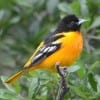 By Jim Stevenson
By Jim Stevenson
Every year I string together a gallery with the eight medium-sized songbirds (a pair in each of four different families), taken during April of the spring migration. So here are the buntings, orioles, tanagers and grosbeaks of 2013 that frequented my humble abode. I am almost as fond of them as the wonderful people who came there to visit.
I enjoyed helping you guys set up a field trip (to Brazos Bend), and it was a huge success (I understand). NEXT YEAR we will do more of that, with more warning for ya’ll and me. I start the Alaska tour Monday and am just out of time. Mucho apologeticos.
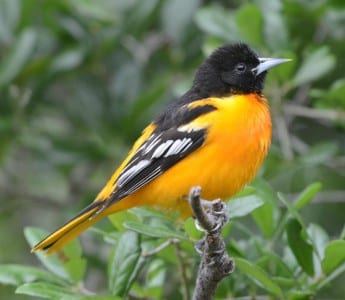
The Baltimore Oriole is a bird so magnificent they named a baseball team after it. The pointed bill pierces fruit and the orange coat is typical of orioles.
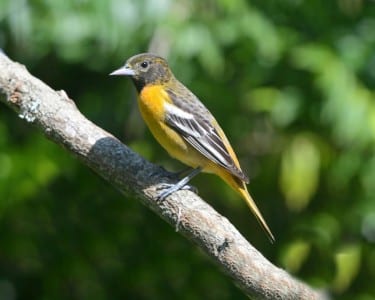
Immature males look like females in markings as well as shade of orange. However, the black head is easily seen, signifying a male.
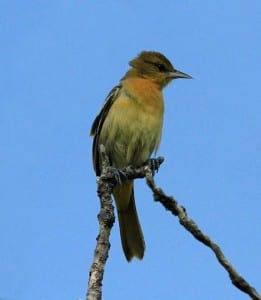
Some female Baltimores are quite pale but this doesn’t make them Bullock’s females. The complex remains a tough one, though, and birds like the above fuel the fires.
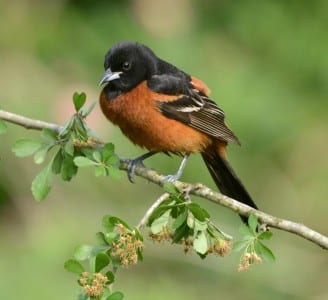
More of a burnt orange is the Orchard Oriole, a common spring migrant in our area. They have also become common breeders on the UTC and are increasing in many areas.
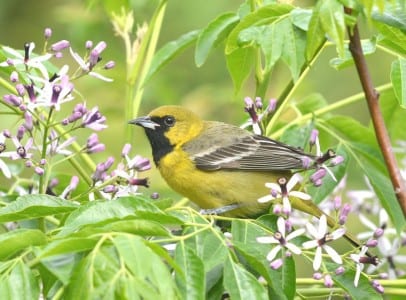
The immature male Orchard Oriole was first thought to be a separate species, being named the Fuerte’s Oriole. See the black throat of all male Orchards?
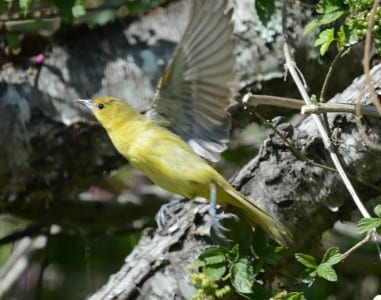
Females clear ly have no black underneath, anywhere. Female Orchards are lemon yellow, not the orange-yellow of Baltimores.
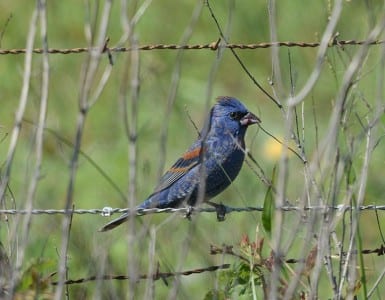
Blue Grosbeaks are twice the size of Indigo Buntings and have brownish wing-bars (also on females). They wag their tails, have huge bills and issue their “tink” chip from the tops of trees.
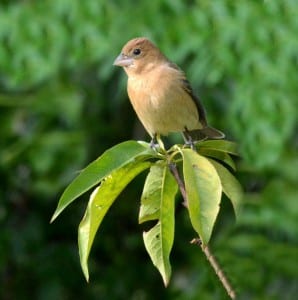
Female Blue Grosbeaks are light brown but the wing-bars show up well on the dark wings. This species is quite shy, like all blue birds except some jays.
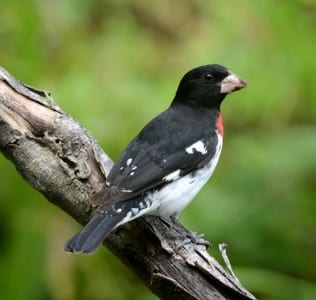
Rose-breasted Grosbeaks are quite the opposite, permitting close approach at feeders as well as in the field. Note the berry-stained bill.
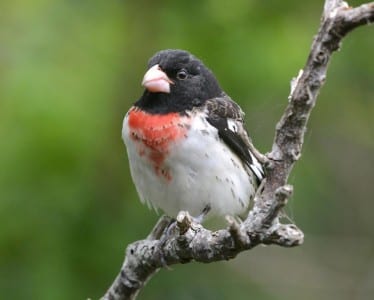
Often we see rose-breasteds changing plumage, with this one 90% of the way there. Doesn’t the rose breast look like a berry stain?

This is just another stage of RBGB development, hanging out in my peach tree. With any luck he’ll be fully developed when the females arr ive.
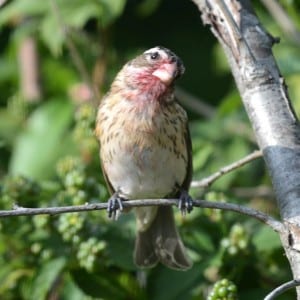
Speaking of the gals, this one has been pretty messy with the berries. It does wear off over time, although they need a little color!
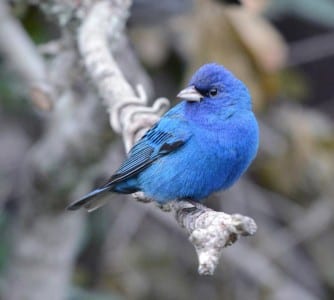
Indigo Bunting males are turquoise with no wing-bars to confuse them with grosbeaks. They occupy the East while another species covers the West.
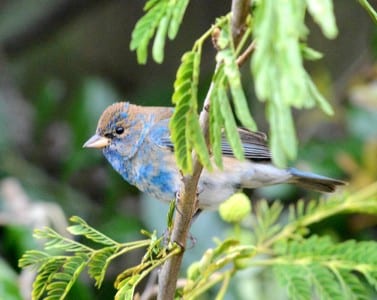
Like the ear lier grosbeak, this male Indigo Bunting is somewhere between winter and breeding plumage. This species loses its color in the off-season.
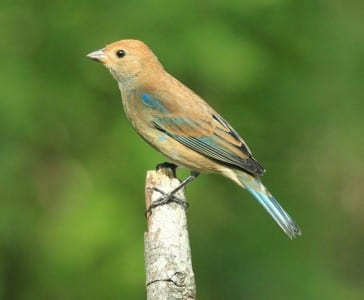
This male Indigo has even less blue but does have a few weeks left to prepare for the gals to arrive. Note the bill is far smaller than a grosbeak’s.
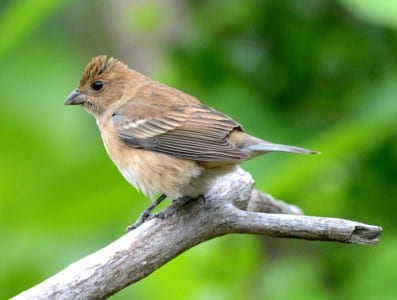
Female Indigo Buntings are quite similar to most other female buntings and are probably confused with regularity.
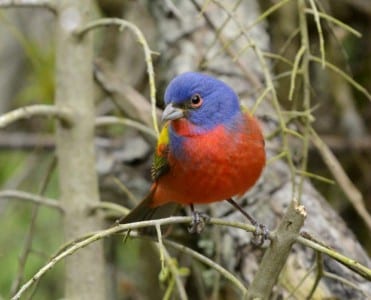
Nothing gets confused with the male Painted Bunting, Amer ica’s most beautiful bird. This species nests in several areas of the Deep South, including my yard.
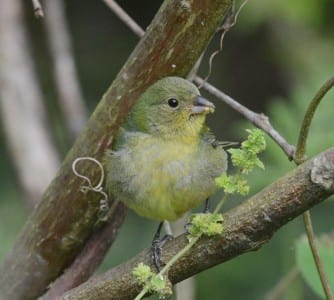
This female Painted Bunting exhibits what tells them from other bunting gals, the green coloration. She’s eating stinging nettle with her conical bill.
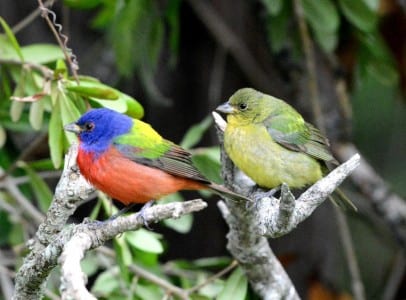
Male and female Painted Buntings, enough color to light up a Christmas tree. In the migration they don’t notice the opposite sex.
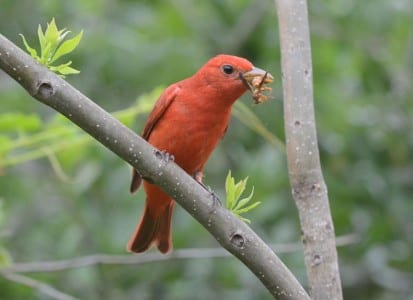
Tanagers are medium-sized songbirds that often display red. This is the male Summer Tanager enjoying one of their favorite foods: wasps.
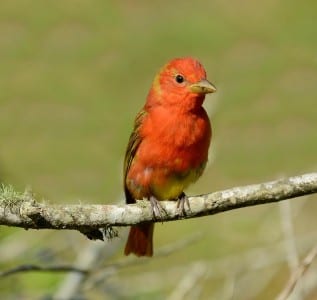
First year male Summers transform from the yellowish immatures in their first spring. After that they are red for life.
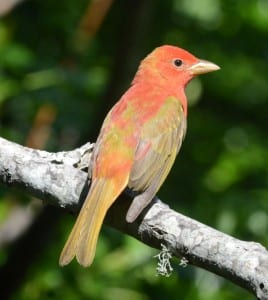
Here’s another yearling Summer Tanager with yellowish-green, hanging out over my pond. Note the heavy bill for killing small animals and carving up fruit.
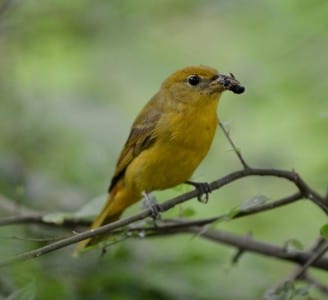
Females like the hymenopterids too, with this bee being dispatched in mere seconds. They are often seen beating stinging insects on limbs
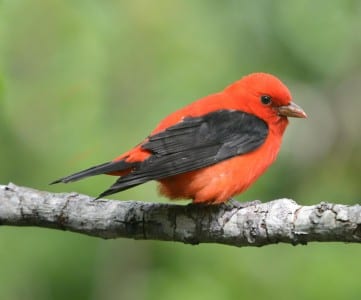
Scar let Tanagers go green every winter, regardless of age, but are usually red (and black) by the time they arrive back in the States.
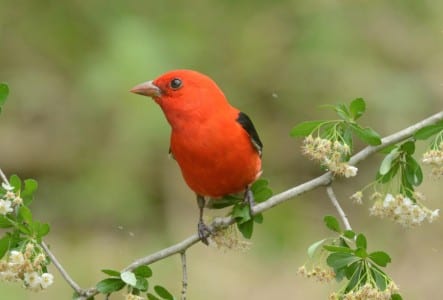
They have a more modest fruit-whacking bill but will take bad bugs when the mood hits. Their black wings separate them from Summers, cardinals and other red birds.
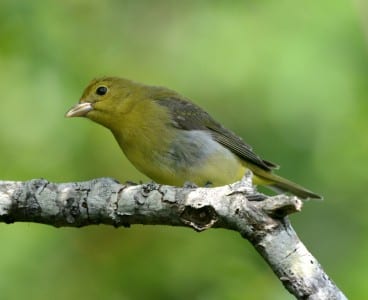
Female Scarlet Tanagers are greener than Summers and also lack the black wings of male Scar lets in fall/winter plumage. I hope you enjoy the group I dubbed “The Great Eight.”

 Posted in
Posted in 

























Jim, where are you? On Crystal Beach? I am buying a house on C.B. and am in awe of these birds. Do you put out feed to attract them?